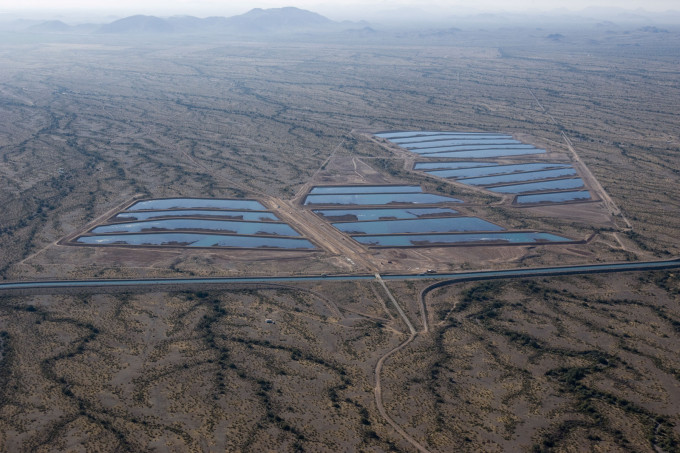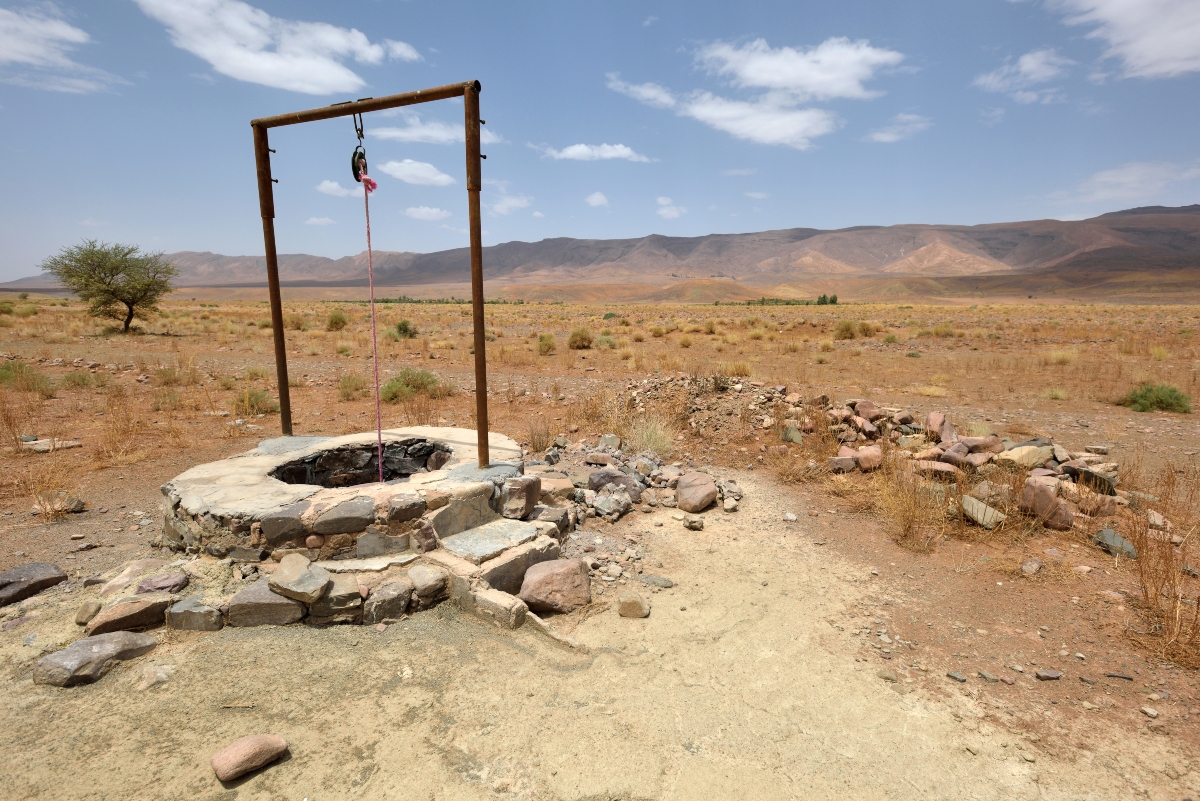97% of all the world’s freshwater lies below our feet. Much of this groundwater is unusable – it is too salty or simply inaccessible. But around 30% of it is fresh and available for use.
This groundwater is stored in underground layers of permeable rock known as aquifers, which act like giant sponges – storing and circulating groundwater.
Aquifers are the primary, and sometimes the only, water source for many of the world’s driest and drought-stricken regions. In fact, the UN estimates that 2.5 billion people depend solely on aquifers for their basic daily water needs.
Groundwater is one of our most valuable resources – even though you probably never see it or even realise it is there. But this very fact makes it particularly vulnerable to overexploitation. Unlike surface waters like lakes and rivers, groundwater depletion remains very much ‘out of sight, out of mind.’ Until the well dries up.
Agriculture, industry and society have tapped into groundwater for millennia but as demand outstrips supply, aquifers are depleting fast. This happens when the rate of extraction exceeds the rate of natural replenishment.
Groundwater replenishment or ‘recharge’ is a natural process. Water from the surface infiltrates into soils and moves through sand, grit and rock before entering the water table below.
However, aquifers recharge slowly – some take a years, others take thousands of years and a few will never refill again. Because of this, aquifers need to be managed very carefully, especially in arid regions where the rate of natural replenishment is painfully slow.
But there are steps that we can take to quicken the pace of groundwater recharge and solve some of the pressing water storage and supply issues we face today.
Artificial groundwater recharge, or managed groundwater recharge, is the practice of increasing the amount of water that enters an aquifer through human-controlled means. Groundwater can be artificially recharged by redirecting water across the land surface through canals, infiltration basins, or ponds, or by injecting water directly into an aquifer through injection wells.
While not yet widespread, there are a number of artificial groundwater recharge projects across the world, including in Pakistan, Namibia, California and Australia.
Perth’s Groundwater Replenishment Scheme
In 2010, the city of Perth, located in the arid west of Australia, embarked on one of the country’s first large-scale groundwater recharge projects. The idea was to take wastewater, treat it to drinking-level quality and then inject it back into Perth’s deep aquifers.
The initiative was a response to a drastic reduction in groundwater levels in the region since 1980, as a result of climate change, reduced rainfall and increased use.
“Decision-makers are having to come up with innovative ways to adapt to the new water reality”
In 2017, the Water Corporation, the state-run water utility for Perth and Western Australia, opened a groundwater replenishment plant in Craigie, in the city’s northern suburbs. The plant receives and treats wastewater from the city and then injects it through wells into two aquifers beneath the site, with the remaining water transferred via a pipeline to another recharge point 13km away.
Just last month the second stage of the scheme was commissioned, doubling the plant’s recharge capacity from 14 billion litres to 28 billion litres of water per year – that’s 11200 olympic size swimming pools. According to the Water Corporation, this is enough water to supply up to 100,000 Perth households.
“Water Corporation’s Groundwater Replenishment Scheme is an innovative and sustainable way to recycle large volumes of water,” said Dave Kelly, Water Minister for Western Australia at the inauguration of the new plant on August 23.
“By recharging our precious groundwater supplies through the scheme, we are able to abstract equivalent groundwater in later years, adding to Perth’s drinking water supply, while reducing impacts to the environment and other water users,” he added.
An uncertain water future
Cities like Perth are increasingly facing the realities of an uncertain water future. As climate change makes rainfall less predictable and droughts more frequent and intense in many regions, decision-makers are having to come up with innovative ways to adapt to the new water reality.
“In dry places across the world, population is increasing and demand for water for food production and broader economic growth is on the rise. The macro trend is that there is more demand, but less water,” says Professor Benjamin Ruddell Director, School of Informatics, Computing, and Cyber Systems (SICCS) at Northern Arizona University.
Artificial groundwater recharge is one technique that can make the use of water more circular. Rather than treating water and sending it back into the world’s rivers and oceans, storing it in aquifers can create a loop: water is extracted from the ground, used, treated and then recharged again.

The Tonopah Desert Recharge Project is part of the Arizona Water Bank scheme (credit: Philip A. Fortnam)
As it turns out, this is not a new idea. The US state of Arizona for instance has, since 1996, quietly poured huge amounts of Colorado River water into dozens of large sand and gravel-filled aquifers until the state is ready to use it. So far, the state has stored nearly 3.6 million acre-feet of water across 28 sites. Arizona is now evaluating plans to tap into this ‘water bank’ as record breaking droughts sweep the Western US.
“Arizona’s groundwater recharge programme is a model for the world, and scheme’s like this will become increasingly important as water becomes more scarce and we begin to appreciate the true value of this precious resource,” added Ruddell, who’s research uses data mapping to track the relationship between food, energy and water in domestic supply chains.
As water resources across the globe come under increasing pressure, a multi-pronged approach is needed; including, water treatment and reuse technologies deployed at scale, more reservoirs, stronger policies, and a focus on water conservation strategies.
Groundwater recharge is one such strategy that is starting to pay dividends for several water scarce regions and should be catching the attention of those who may face scarcity in the future.
Windhoek, Namibia, were able to withstand a particularly tough drought in 2020 by tapping into groundwater reserves they have built up since the 1990s. During the drought, the aquifers went from being a backup supply to the primary supply of water for the African city. Similar to Perth, Windhoek also recycles wastewater for direct groundwater recharge.
The good thing is that the technology for artificial groundwater recharge is well established, and there have been many success stories globally. However, as water becomes more scarce, allocating it for recharge may not always be a top priority.
Researcher Alvar Escriva-Bou of the PPIC Water Policy Centre points out that the local context of each recharge scheme needs to be well considered and immediate water needs catered for and prioritised. But if planned correctly and based on rigorous scientific research, artificial groundwater recharge is a sustainable, viable solution to the world’s water crisis.







